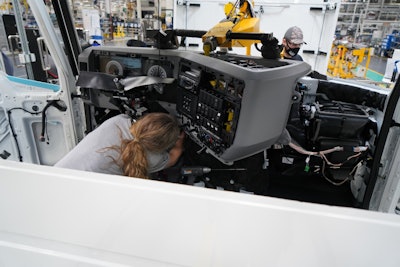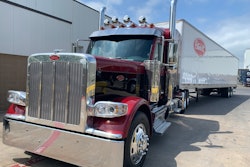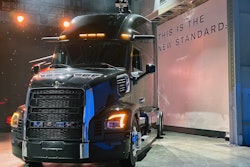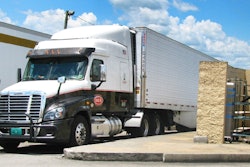
Fleets have long valued choice at truck OEMs, the ability to get the vehicle option content they want. A common term for that is “purpose built.” Purpose-built trucks are made to order.
Truck OEMs do their best to comply with these wishes, maintaining an extensive list of published options that have been engineered to mostly work together. The OEMs have engineers who check to make sure those options actually will all go together on the production line, and when they discover conflicts, they engineer solutions.
There are even unpublished options that may be available for select customers if the fleet pushes hard enough or the OEM is desperate enough for a sale. All these permutations of options mean the factory has to be able to build literally millions of variations of trucks.
If you tour any truck factory, you often will see a production line where each truck on the line differs from the next one. It’s a very long way from Henry Ford’s iconic Model T production line where all the vehicles being built were exactly the same.
All that choice brings with it costs. Costs for the OEM to engineer all the permutations of options. Costs for the parts people to procure spare parts. Costs for warehouses to store spare parts. Costs for service technicians to learn how to service all the variations.
Choice also means lower volumes of each part are made, usually resulting in higher unit pricing to offset the tooling costs.
But what if it was different? What if there were fewer available variations?
In World War I, the U.S. government found that all that variation was contrary to getting trucks on the road and servicing them in the field. They had 294 makes and body types.
They realized they needed to standardize the truck so multiple manufacturers could make them in volume, so soldiers in the field could keep them running, and the supply chain of parts could be simplified. The army came out with the three-ton Liberty Truck, the Class B Standardized Military Truck in 1917. I found a good collection of images of Liberty Trucks built by one manufacturer, Gramm-Bernstein Motor Truck Company.
The lesson about standardizing to increase volume and improve service and parts was revisited in World War II with the famous 2-1/2-ton truck. The Deuce-and-a-half was a 6x6 truck that Generals Patton and Eisenhower both credit with helping win the war. This standardized truck was built in large numbers by multiple companies including GMC, Studebaker, REO, International Harvester, and Federal Motor Truck. There were minor variations inherent in having multiple cooks in multiple kitchens cooking up this truck, but for the most part, it was standardized, with several sources indicating the U.S. producing more than 800,000 of the 2-1/2-ton truck versions in five years. That’s an average of 160,000 trucks per year — a remarkable volume considering the entire Class 8 truck market in 2024 was about 280,000 units.
One lesson learned from these two examples is that standardization of trucks is possible. It’s been done before in high volumes across multiple OEMs.
Could standardized trucks be possible today? We may be closer than you think.
How many OEM options are the same at each truck maker? A persistent issue suppliers face is having to stock the same part under different OEM part numbers. How many options are essentially the same at all OEMs except for perhaps cosmetic differences? What component manufacturers are common to more than one OEM? Everything from fasteners, springs, cooling modules, suspensions, fifth wheels, frames, wheels, tires, switches, seats, mirrors, cameras, etc. may be originating from the same factories with very similar if not identical designs.
The growth in advanced driver assistance systems brings with it massive amounts of software and computer hardware that needs to be tested and certified so it can work on each truck. The heart of each of these systems is most likely a common backbone of equipment and coding.
Autonomous trucks will be even more common because of the massively complex software and sensor integration needed to make these vehicles safe in operation.
I’ve followed new truck start-ups for the last decade. Do you see them offering high numbers of options? Most likely, they are struggling just to get a handful of variations on their order books. The need for cash flow means volume sales takes precedence over variation — customer choice will come later.
Battery electric trucks are particularly going to be challenging to differentiate in the future. Motors, batteries, high-power electronics, even BEV tires are likely going to be very similar. Where the variation will occur is in the exterior styling and interior appointments like seats, interior colors, materials that are touched, dash displays, etc.
What if a standard truck specification was possible? What if reshoring American industry were focused on building a few standardized truck types? What if reshoring was viewed in the same urgent context as the Army needs in WWI and WWII? Could a modern Liberty Truck or Deuce-and-half be possible for long-haul trucking?
NACFE has been discussing the Messy Middle, the plethora of powertrain technology choices now available from a growing list of manufacturers, facing the industrys. At last count, CALSTART estimates there are more than 35 truck makers of all classes marketing trucks in the U.S. That growth was before reshoring American manufacturing became a government priority.
Reshoring the trucking industry may mean a reduction in choice. We’ve been there before and excelled in that environment. Fleets and OEMs need a plan. Chaos is not a plan. One path forward might be in standardizing vehicles.
I’m sure that is sacrilege to some, particularly dealers that work in the highly competitive sales world. But this industry is facing some significant challenges, new approaches to successful old ideas may be a path forward.












